Automatic palletizing: MultiPack drives each palletizing system
to maximal productivity
MultiPack controls the automatic palletizing and depalletizing of identical-type packing units, irrespective of their geometrical shape, in order to optimize the productivity of the palletizing system.
Since 1995, the software modules MultiPack for Robots and MultiPack for Layer Palletizers have been controlling the palletizing systems of our customers around the world. Every software system is individually adapted and configured to the specific customer requirements and functionalities of the respective palletizing system.
The solutions can also be retrofitted. To calculate the layer and pallet packing patterns, both software modules use the MultiPack algorithms. You can find more details about the wide variety of potential uses at www.palettierung-software.de.
Simulation of automatic palletizing with an articulated robot
Simulation of automatic palletizing with a layer palletizer
MultiPack offers significant advantages for plant manufacturers and end users
The MultiPack programs available for automatic palletizing feature two optimisation modules: The first calculates the best layer and pallet packing patterns for the specified dimensions of the packages. The second calculates an optimal palletization sequence for every layer and packing pattern the user views, based on the features and functionalities of the palletizing system. Applying this information, the user can choose the most suitable solution for their needs. If necessary, they can adjust the solution and generate the corresponding control data for correct package positioning and export this data for the palletizing system.
These options offer both palletizer manufacturers and end users significant benefits: End users get a tool they can use to generate control data for the robot without any programming skills, at little effort, and without time-consuming and costly robot teaching. This results in considerable cost savings if the package dimensions change frequently. At an early stage of project planning, palletizer manufacturers can generate control data for the existing packing patterns of customers.
Both MultiPack for Robots and MultiPack for Layer Palletizers come with the capability to manage many common tasks. They can also be expanded to meet new, customer-specific requirements.
Benefit from the expertise of the Multiscience team
Over more than 25 years, our continually developing control software has helped palletizer manufacturers around the world achieve innovations in effective palletizing performance. With the experience gained from these longstanding partnerships plus our extensive expertise, we have repeatedly demonstrated that, even in unusual situations with complex requirements, Multiscience always finds effective solutions.
Optimized control of packing robots with MultiPack: Effective, reliable and flexible
MultiPack for Robots maximizes the packing performance of both multi-axis and gantry robots when palletizing and depalletizing identical-type packages of different geometries. The following examples show how MultiPack for Robots calculates layered palletization of cartons, sacks, film rolls, oval buckets and bundles of paperboard blanks. They also illustrate how, for each layer pattern, MultiPack for Robots optimizes the grouping of the packages in the gripper, the placement sequence and the approach direction of the gripper.
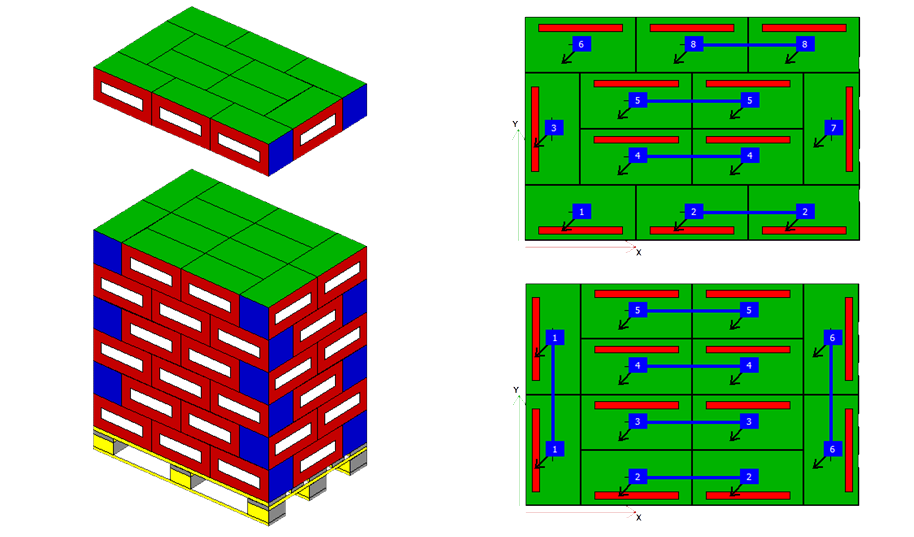
Palletization of rectangular packages
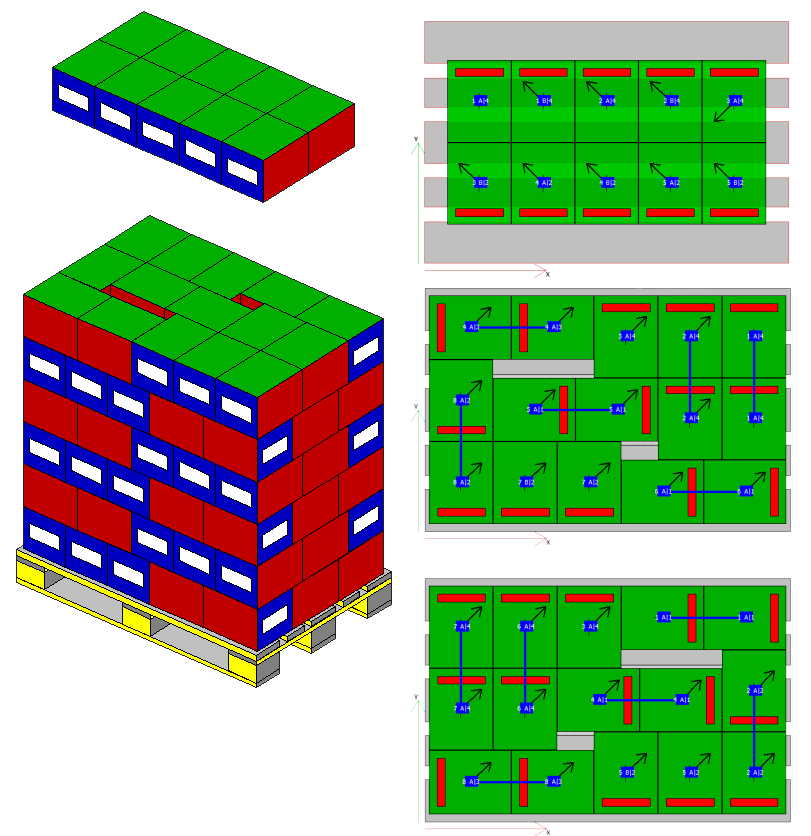
Palletization of rectangular packages with a different top layer

Palletization of oval buckets
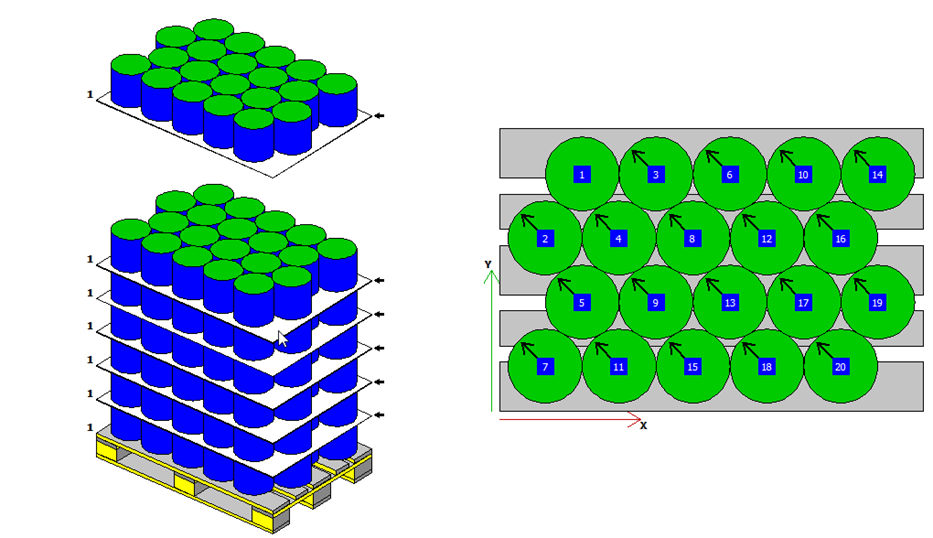
Palletization of circular, cylindrical packing units

Palletization of bundled paperboard blanks
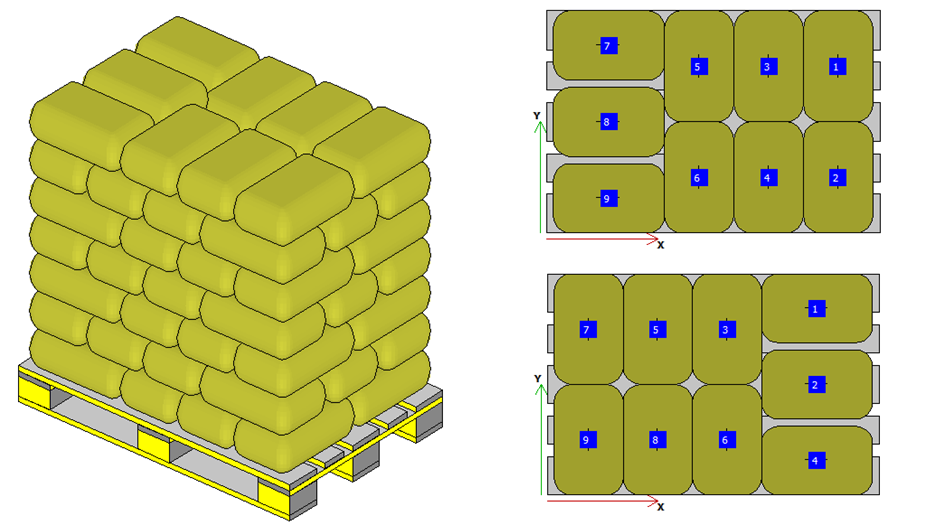
Palletization of bags
Customised extended versions of MultiPack for Robots control automated packing of objects in containers. The example shown here is of a cage pallet which was automatically packed with metal tubes by a packing robot.

Packing metal tubes in a cage pallet
Based on the features and functionalities of the robot, e.g.
- Gripper type: suction, clamp, fork gripper
- Permitted gripper rotation angles
- Space available for the palletizing system
- Reach of the robot arm
MultiPack for Robots calculates and displays the best layer and pallet stowage patterns for each package dimension along with the optimized palletizing sequences.
The user selects the best stowage pattern for the specific requirements. If necessary, the user can alter the pattern both in terms of the layer pattern and the calculated palletizing sequence. No programming skills are necessary for this. The user can also simulate the feasibility of the pattern on the specific palletizing system and export the control data for correct positioning of the packages. If it is not possible to achieve efficient composite stacking of rectangular packages, even after mirroring or rotation of a layer pattern, the user can combine two layer patterns, as shown in the 3D video here. As soon as the user enters a layer pattern for palletization, MultiPack for Robots optimizes the palletization sequence. MultiPack for Robots controls depalletization in a similar way.
Further functions of MultiPack for Robots are:
- For every gripper type, several packages can be picked up and placed in one cycle
- Label positions can be taken into account
- Intermediate layers can be placed
- The specification of technical or logistical restrictions ensures the software automatically rejects positions which are unachievable or would cause collisions with already packed packages.
Easy generation of control data
with MultiPack for Robots
Changing a layer pattern
and packing sequence
Using MultiPack for Robots without layering to better utilise the pallet space
Special versions of MultiPack for Robots also give users an additional option for palletising rectangular packages. They can apply complex, non-layered packing structures for better utilisation of the pallet space than layered formations. MultiPack calculates multiple stowage patterns for the pallet type used as well as the optimum palletizing sequence for each stowage pattern. The user chooses what they consider to be the best stowage pattern. Then MultiPack simulates the feasibility of the palletizing sequence on the plant and the user can export the corresponding control data for correct positioning of the packages.
The example shown on the right illustrates the use of this special version of Multipack for Robots by an automobile supplier.
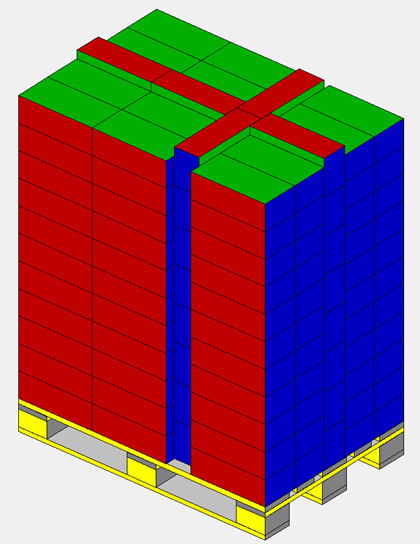
Palletization of rectangular packages without layering
Simulation of automatic palletizing without layering
Do you have any questions about MultiPack for Robots?
Simply contact us using the contact form or by e-mail to info@multiscience.de.
We’ll be happy to help you.
Controlling layering palletization with MultiPack: Effective, reliable and flexible
MultiPack for Layer Palletizers maximises the performance of automated layer palletizers when loading pallets with identical-type cartons, trays, containers and sacks. The program creates each layer pattern by placing individual rows of packages onto the loading base. The figure below uses the example of a carton with the dimensions L = 270 mm, W = 210, H = 200 mm. It shows the optimal layer pattern calculated by MultiPack in yellow and the optimal infeed sequence which is automatically calculated by MultiPack. Of course, the user can modify all this without any programming skills. The figure also shows the pallet pattern in composite stacking (with the option of taking account of labels).
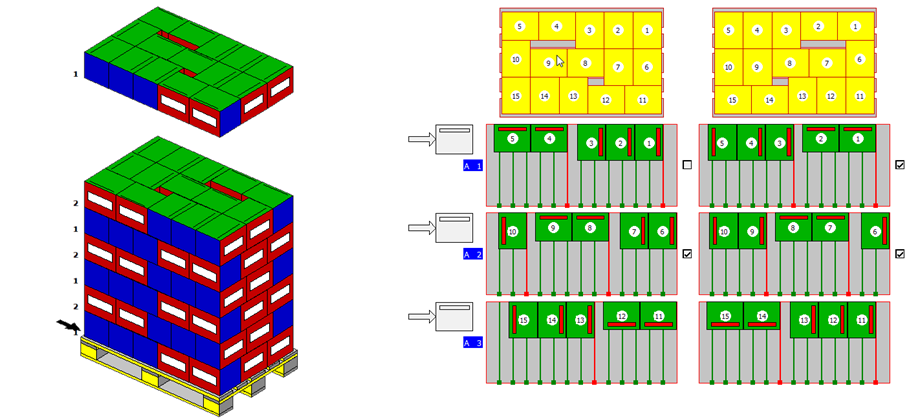
Palletization of rectangular packages with a layer palletizer showing the infeed sequences and stopper positions
MultiPack takes into account the features of the feeding technology of the layer palletizer, e.g.
- Number of infeed tracks
- Number and position of stoppers or use of a synchronized conveyor belt
- Availability of a rotation station
- Option of simultaneous feed of packets placed side-by-side
Based on this information, MultiPack calculates and displays several layer and pallet stowage patterns along with the optimal row formation for every package dimension and pallet type.
The user chooses what they consider to be the best stowage pattern. Then, if necessary, the user can modify the pattern with regard to both layer pattern and row formation. No programming skills are necessary for this. Finally, the system simulates the feasibility of the new pattern on the palletizing system used. If it is not possible to create efficient composite stacking by mirroring or rotating a layer pattern, the user has the option of combining two different layer patterns. The 3D video here shows this option. If the user specifies a layer pattern for palletization, MultiPack for Layer Palletizers optimizes the row formation.
Generation and checking of row formation with MultiPack for Layer Palletizers
Any questions about using MultiPack for Layer Palletizers?
Simply contact us! Use the contact form, mail us at info@multiscience.de, or simply give us a call.
We’ll be happy to help you.

